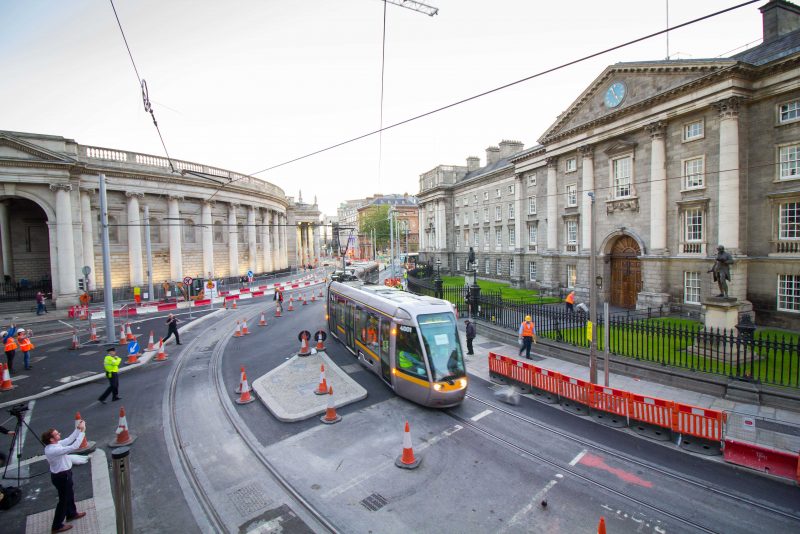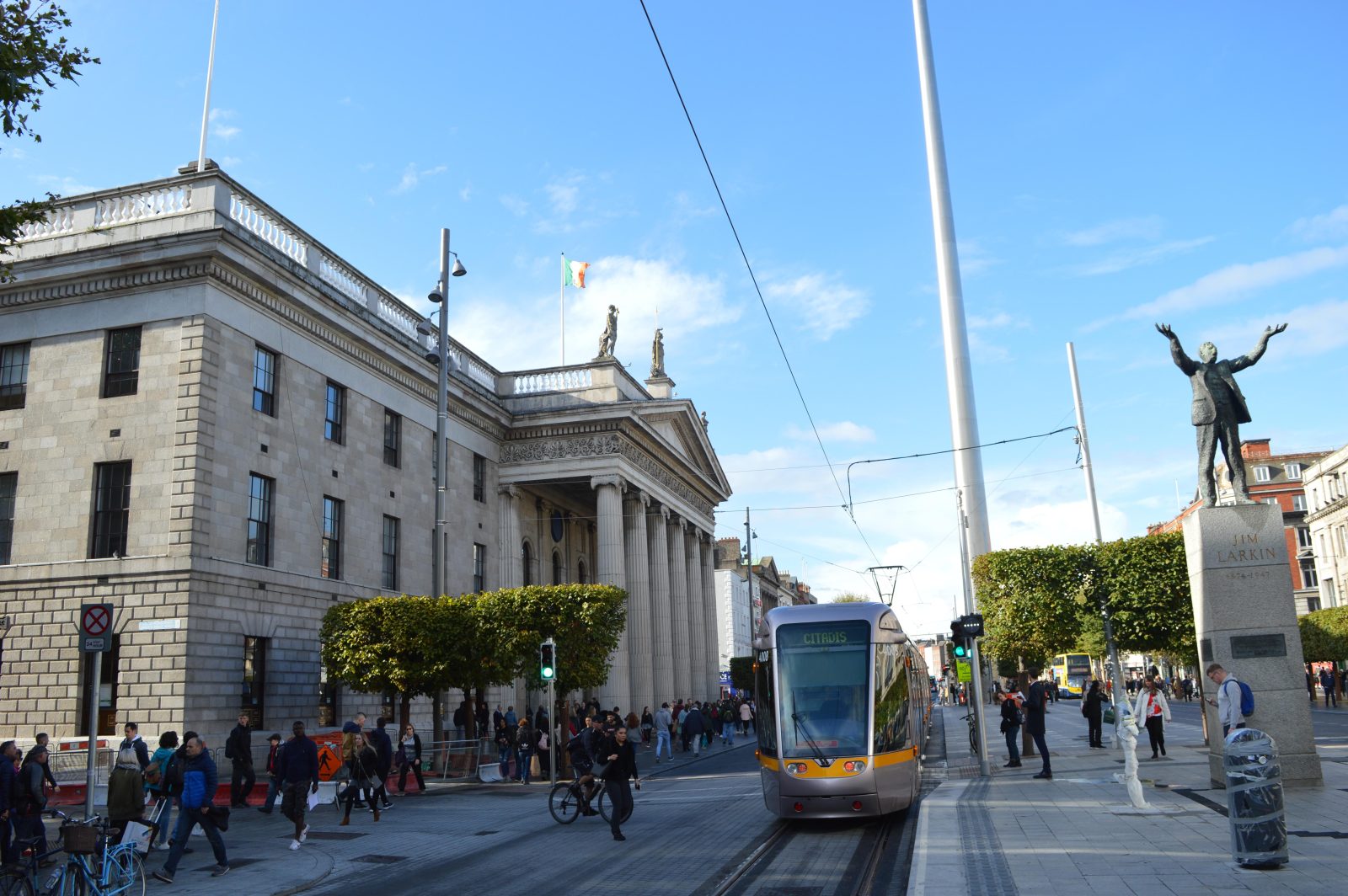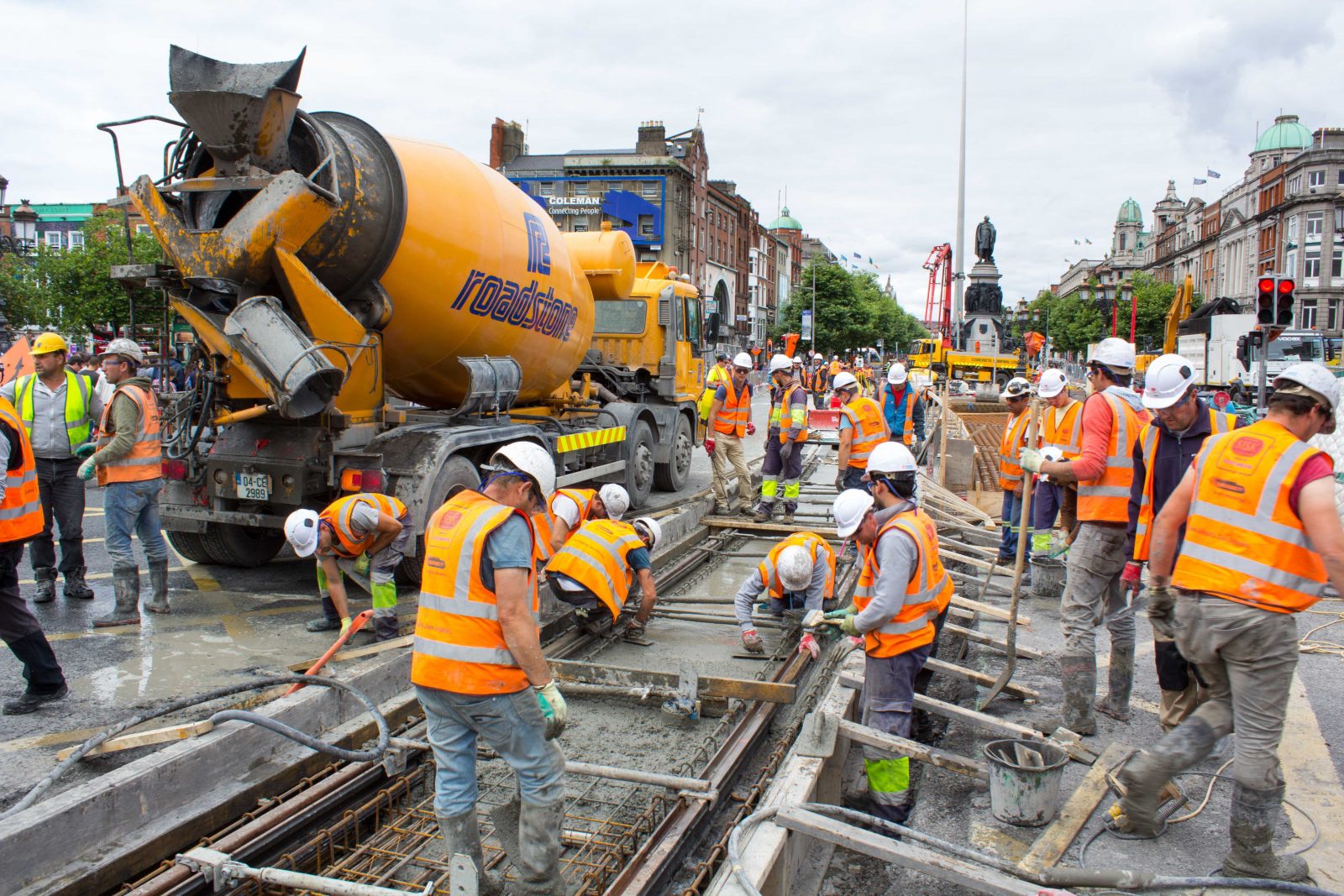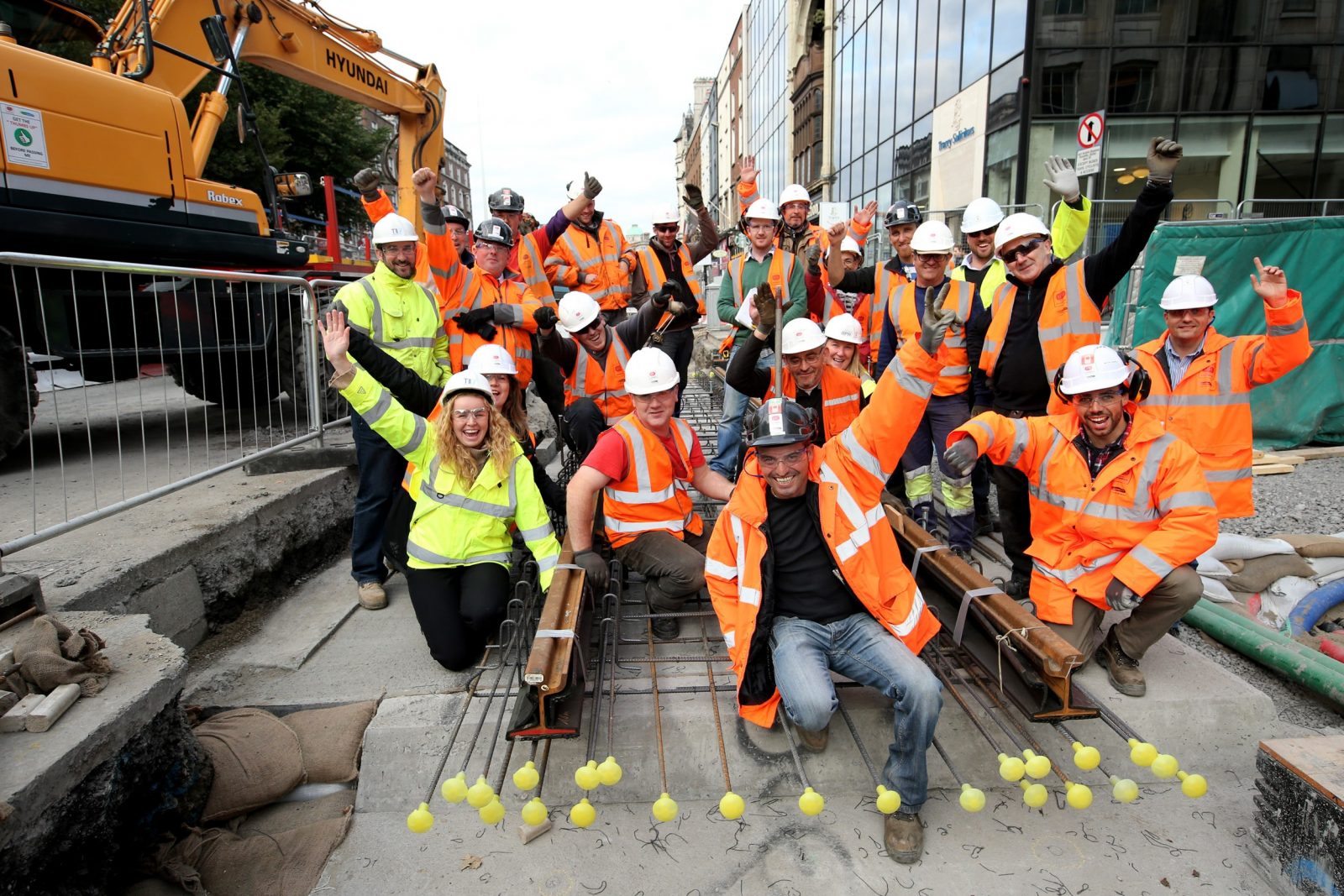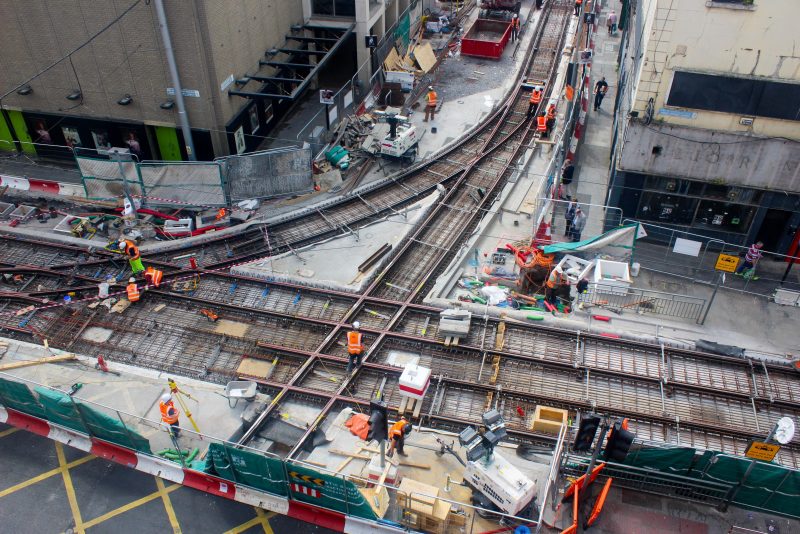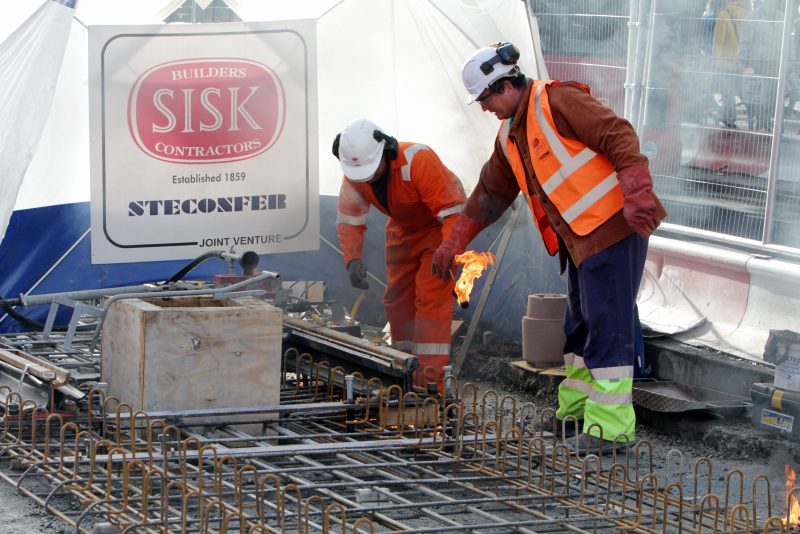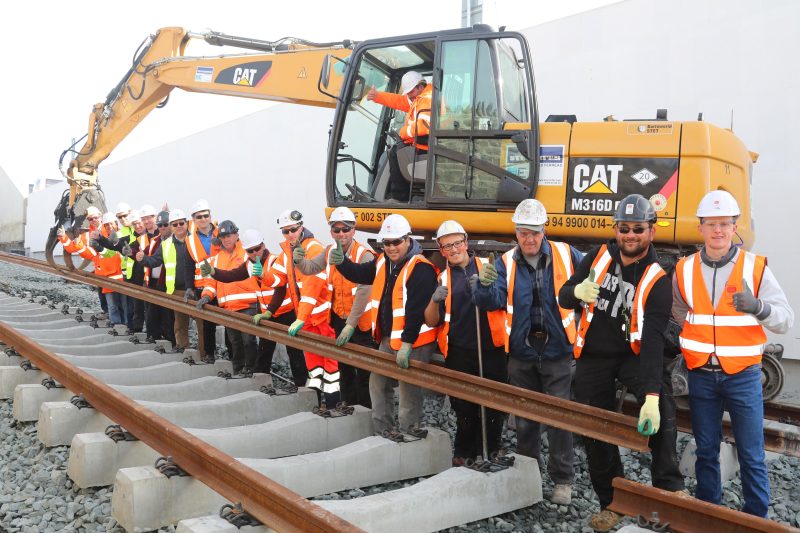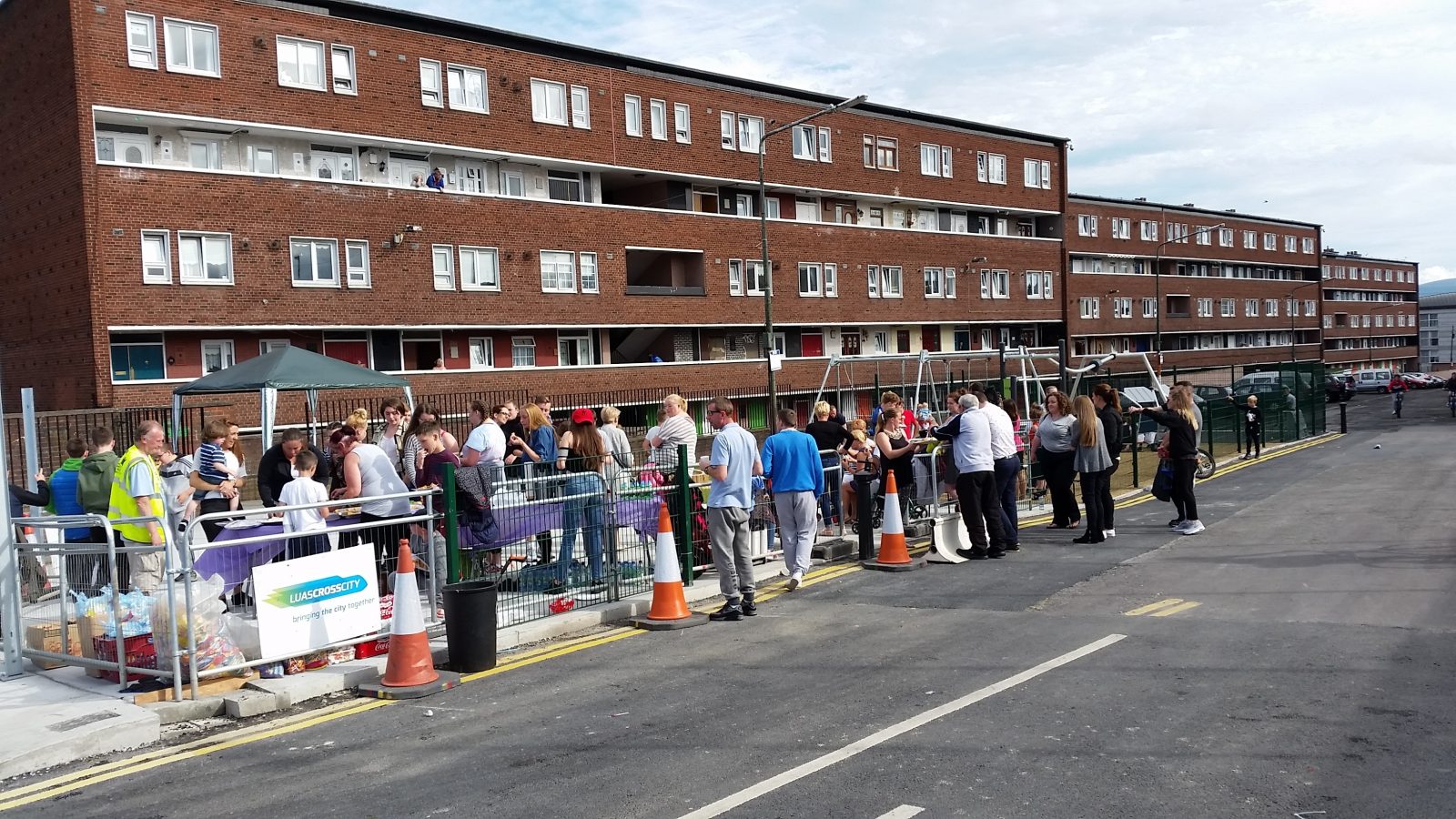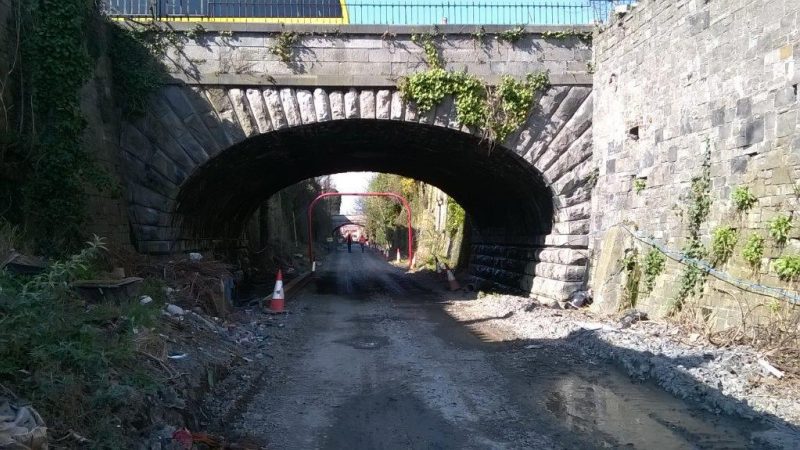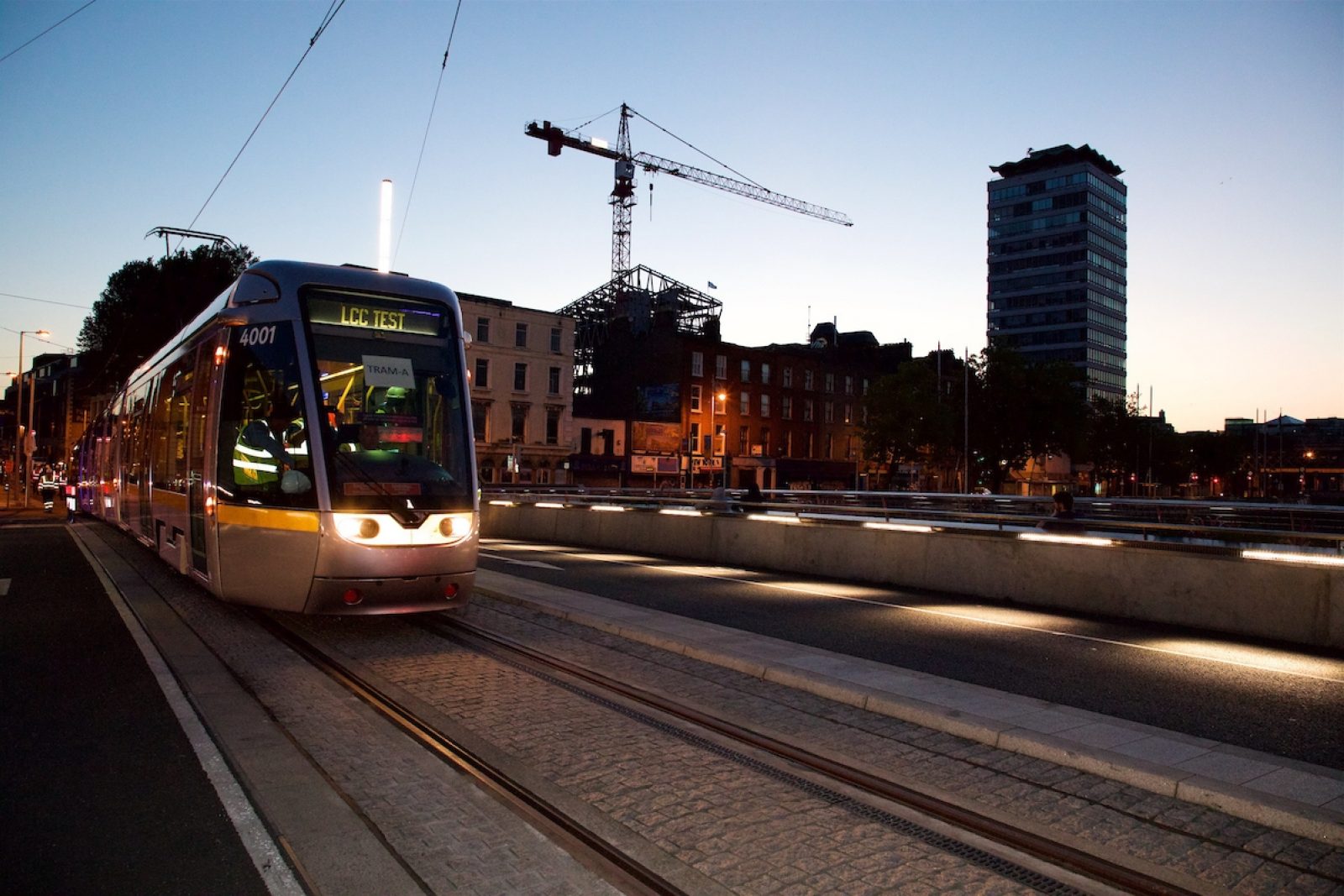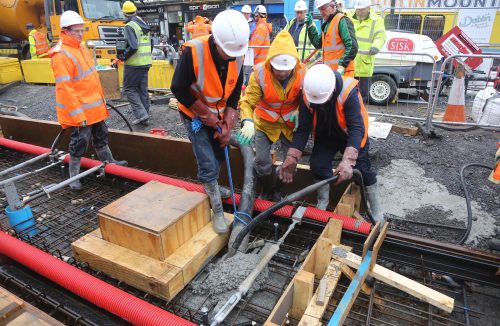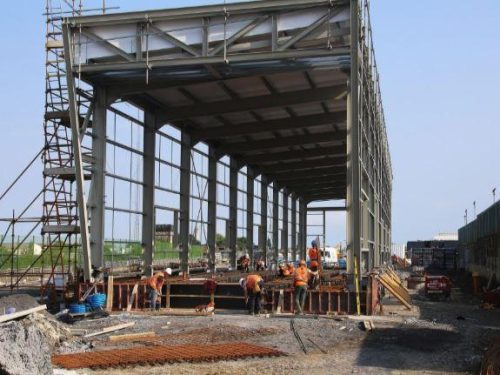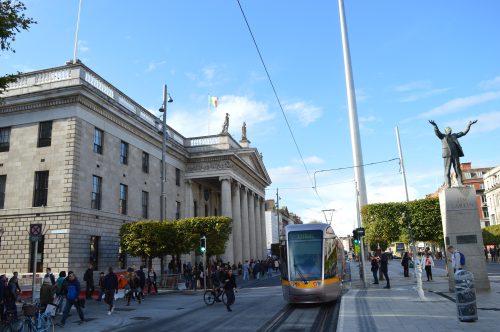Significant urban improvement
LCC is recognised as being one of the most challenging and complex projects undertaken by the Irish State in the modern era. The successful delivery of the project was seen as being nationally important in terms of Ireland’s reputation and ability to attract future investment, both in national infrastructure and the economy in general.
The standard of finished product has been recognised by the client, operator and stakeholders as being exemplary. The rebuilding and rejuvenation of the city centre streets which incorporate the extension has also left a positive legacy for Dublin city.
Dublin city centre works
As completed, LCC comprises a 6km extension northwards from the previous Green Line terminus at St. Stephen’s Green, passing through Dublin city centre to the north‐west inner city suburbs, and terminating at an interchange station on the suburban railway line at Cabra’s Broombridge station.
The city centre section is comprised of a single-track loop arrangement, enabling different service patterns to be employed according to demand. The new line crosses the existing Red Line at O’Connell Street and Marlborough Street, with engineering connections and passenger interchange at both locations.
Interface management
The overall Luas Cross City project consisted of a number of different contracts which were carried out in advance or parallel with the main infrastructure works (BXD-400). We managed the relevant interfaces and delivered all of the civil infrastructure requirements in the design and construction of the project, including control systems, heritage works and utilities.
We also successfully achieved the timely handover of over 200 interface milestones relating to designs, construction, installation and testing/commissioning handovers; these could not have happened as seamlessly as they did without successful collaboration throughout.
We are capable of offering our clients a bespoke service on every project
On street, concrete track bed and shoulders poured
Number of people who worked on the mains infrastructure project
Tonnes total weight of the tracks
Traffic/stakeholder management
The traffic management requirements involved in the project were extensive to say the least, particularly in relation to the on-street section. As planned, they were set to involve the most unprecedented levels of ongoing city centre traffic management in decades, if not centuries, which made it all the more imperative that one of our core project mantras was to “keep Dublin moving."
Community enhancement
LCC provides a fast, reliable and modern transport system for communities to be proud of. It efficiently links the various city precincts and provides connectivity between expanded areas of suburbs and larger areas of the city centre, transforming local neighbourhoods in the process through rejuvenations such as extensive tree planting along the rail corridor and improved access to Cabra’s Mount Bernard Park.
Conservation
The upgrading of two existing bridge structures along the proposed LCC extension was a detailed process, involving the reinforcement of the existing parapets using proprietary anchor systems compatible with the preservation of existing masonry; provision of high containment on the wing walls of both bridges.
One of the structures (which had previously been used by the Midland Great Western Railway) also required extensive heritage repair works, as well as structural assessment to meet with conservation requirements.

